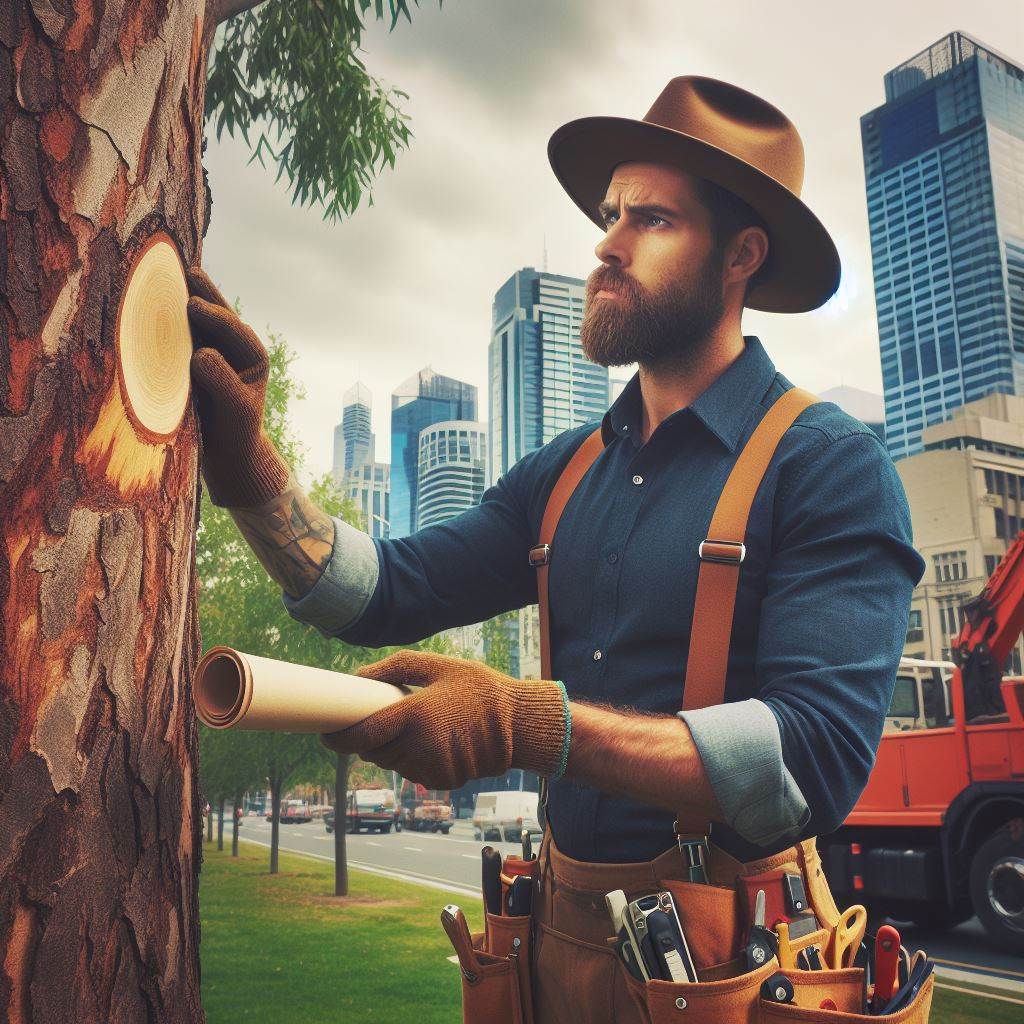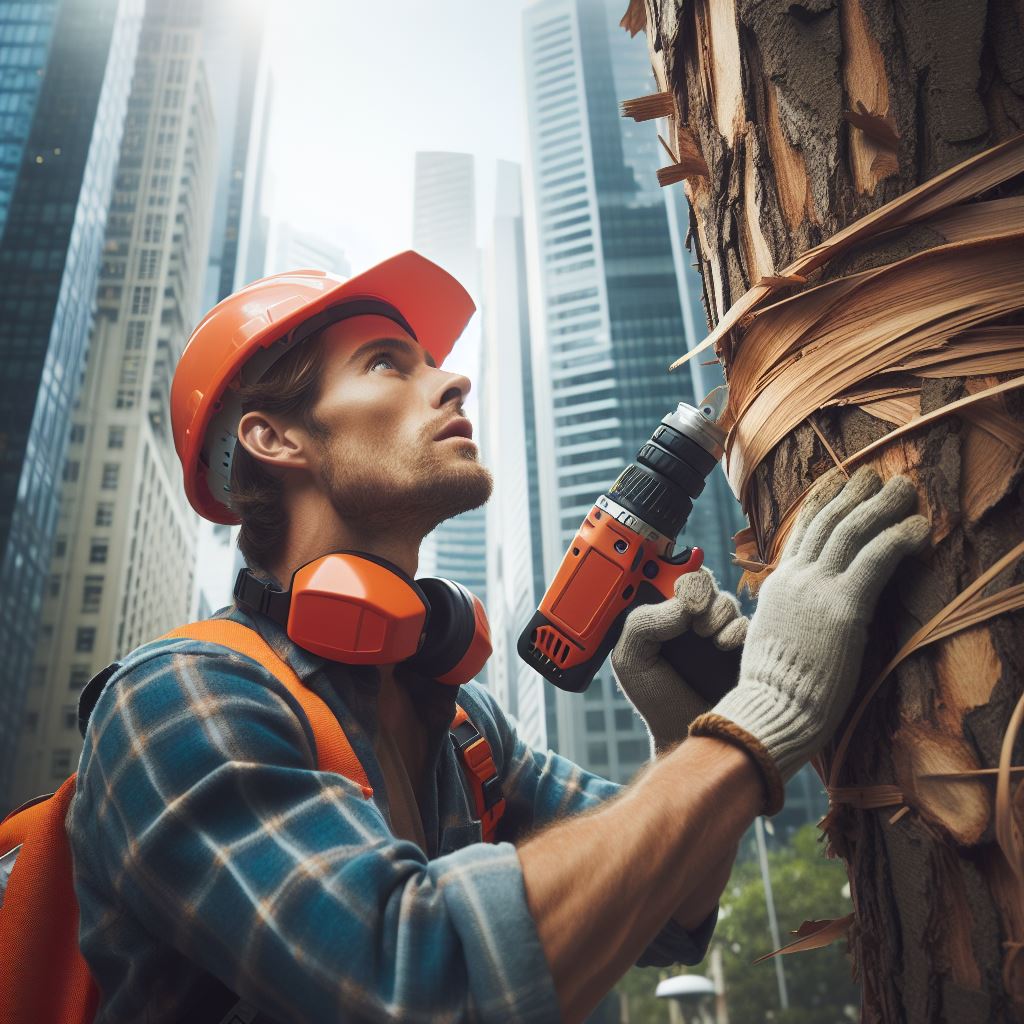Introduction
Urban forestry is the practice of managing and caring for trees in urban areas.
It is important as it contributes to environmental, social, and economic benefits.
Australian cities have been actively involved in greening initiatives to enhance their urban forests.
These initiatives include planting more trees, creating green spaces, and implementing sustainable urban design.
Urban forestry brings numerous advantages such as reducing pollution, improving air quality, and enhancing biodiversity.
Trees also provide shade, reduce energy consumption, and increase property values.
In addition, urban forests promote physical and mental well-being by providing areas for recreation and relaxation.
Australian cities have recognized the importance of urban forestry and are implementing strategies to expand their tree canopy.
These initiatives involve collaboration between government, community organizations, and residents.
By investing in urban forestry, Australian cities are creating more sustainable and livable environments for their residents.
The state of Australia’s urban landscapes
Overview of the current state of green spaces in Australian cities
- Australian cities are experiencing rapid urbanization and expansion.
- As a result, green spaces such as parks and urban forests are becoming scarce.
- Urban areas often lack biodiversity and suffer from soil degradation and air pollution.
- The current state of green spaces in Australian cities is in need of improvement.
Challenges faced by urban areas in terms of environmental sustainability
- Rapid urbanization leads to the loss of natural habitats and ecological balance.
- Increased concrete and asphalt cover reduces permeability and exacerbates flooding.
- Heat island effect is more pronounced in urban areas due to lack of adequate green cover.
- Urban areas face challenges in managing stormwater and reducing runoff pollution.
Need for urban forestry to address these challenges
- Urban forestry involves the planning, planting, and managing of trees in urban areas.
- Trees can provide numerous benefits such as improving air quality and mitigating climate change.
- Urban forestry helps in increasing biodiversity and creating healthier ecosystems in cities.
- Green spaces contribute to the physical and mental well-being of urban residents.
- The integration of trees in cities can help reduce the urban heat island effect and lower energy consumption.
- Urban forestry is crucial for enhancing the aesthetic appeal and livability of urban areas.
In a nutshell, the current state of green spaces in Australian cities is inadequate, and urban areas face various challenges in terms of environmental sustainability.
Urban forestry is a solution that can address these challenges by providing numerous benefits such as improved air quality, reduced heat island effect, and enhanced biodiversity.
It is essential for policymakers and urban planners to prioritize and invest in urban forestry to create greener and more sustainable cities.
Read: The Economics of Farming in Australia Unveiled
Benefits of urban forestry in Australian cities
Urban forestry plays a vital role in the development and sustainability of Australian cities. Apart from the aesthetic appeal it brings, urban forestry also provides numerous benefits to the environment and the community as a whole.
In this section, we will explore the various benefits that urban forestry brings to Australian cities.
Improved air quality and reduced pollution levels
- Trees act as natural air filters, absorbing pollutants such as carbon dioxide and releasing oxygen.
- They also trap and filter harmful particulate matter, which is especially crucial in densely populated areas.
- By reducing air pollution levels, urban forestry helps improve the overall air quality and creates a healthier living environment.
Mitigation of urban heat island effect through increased shade
- The urban heat island effect refers to the higher temperatures experienced in urbanized areas compared to surrounding rural areas.
- Trees provide shade and lower surface temperatures by intercepting and absorbing the sun’s radiation.
- This shade reduces the need for extensive air conditioning, thus reducing energy consumption and associated greenhouse gas emissions.
- By mitigating the urban heat island effect, urban forestry helps create a more comfortable and livable urban environment.
Enhanced biodiversity and ecosystem services
- Trees in urban areas provide habitat for various wildlife, including birds, insects, and small mammals.
- They contribute to the overall biodiversity and ecological balance of the city, supporting a range of species.
- Urban forestry helps create green corridors and connect fragmented ecosystems, promoting wildlife movement.
- Furthermore, trees help improve soil quality, prevent erosion, and contribute to the overall health of urban ecosystems.
Positive impact on mental and physical health of the residents
- Access to green space and nature has been proven to have a positive impact on mental health and well-being.
- Urban forestry provides opportunities for recreational activities, promoting physical fitness and community engagement.
- Studies have shown that exposure to nature and greenery can reduce stress, anxiety, and improve overall mental health.
- The presence of trees and green spaces also encourages outdoor activities, leading to a healthier lifestyle for residents.
In fact, urban forestry brings a multitude of benefits to Australian cities. It improves air quality, mitigates the urban heat island effect, enhances biodiversity and ecosystem services, and positively impacts the mental and physical health of residents.
Therefore, it is crucial to prioritize and invest in urban forestry as an integral part of urban planning and development.
Read: Exploring Permaculture Practices in Australia
Successful urban forestry projects in Australian cities
Urban forestry is a crucial aspect of sustainable city development, and Australian cities have successfully implemented various projects that highlight the importance of green spaces.
These projects have not only provided environmental benefits but also positively impacted the overall community and economy. Below are notable examples of urban forestry projects in different Australian cities:
Sydney
- The City of Sydney’s Greening Sydney Plan aims to increase the city’s urban canopy cover by 50% by 2030.
- Local government and organizations have initiated tree planting programs to enhance green spaces and promote biodiversity.
- These projects have reduced air pollution, mitigated the urban heat island effect, and improved the overall aesthetics of the city.
- Furthermore, the increased urban greenery has attracted tourists, leading to a boost in the local economy.
Melbourne
- The City of Melbourne established the Urban Forest Strategy, which aims to plant 3,000 trees annually.
- Local organizations have launched community tree planting events to actively involve residents in enhancing the urban forest.
- These initiatives have enhanced the city’s biodiversity, reduced the urban heat island effect, and improved air quality.
- The urban forests have also provided recreational spaces for residents, fostering a sense of community and well-being.
Brisbane
- Brisbane City Council has implemented the “Growing Brisbane’s Future” program, targeting the planting of one million trees by 2031.
- Local communities actively participate in tree planting initiatives, contributing to the city’s urban forest expansion.
- These projects have improved air quality, reduced stormwater runoff, and provided shade in the hot and humid climate.
- The increased tree coverage has attracted birds and wildlife, enhancing the biodiversity of the city.
Adelaide
- The City of Adelaide has undertaken the Greening Adelaide Plan, aiming to increase the city’s tree canopy cover by 20% by 2020.
- Local governments have introduced incentives for residents and businesses to plant and maintain trees on their properties.
- These initiatives have mitigated the impacts of extreme weather events, improved air quality, and provided aesthetic value.
- The urban greening efforts have attracted investment, contributing to the economic growth of the city.
Perth
- The City of Perth’s Greening Plan focuses on enhancing the urban forest by increasing canopy cover and improving green spaces.
- Local organizations have conducted extensive reforestation projects, planting native species to restore biodiversity.
- These projects have reduced the effects of heatwaves, improved air quality, and provided recreational spaces for the community.
- The urban greening efforts have also attracted businesses and investment, boosting the local economy.
In essence, urban forestry projects in Australian cities have proven to be successful in enhancing the environment, community, and economy.
The initiatives taken by local governments and organizations in planting trees and increasing green spaces have resulted in improved air quality, reduced urban heat island effect, increased biodiversity, and enhanced aesthetic value.
Additionally, these projects have provided recreational spaces, fostered community well-being, and attracted tourism and investment, contributing to the overall economic growth of the cities.
It is evident that investing in urban forestry is a crucial step towards creating sustainable and livable cities.
Read: Soil Health and Its Importance in Aussie Farms

Potential challenges and solutions
Identifying potential challenges in implementing urban forestry in Australian cities can be a complex task. However, some common obstacles that arise include the lack of suitable land, limited resources, and public awareness.
Nevertheless, there are several suggested solutions that can address these challenges and ensure the success of urban forestry initiatives. These solutions include community involvement, strategic planning, and government support.
One potential challenge in implementing urban forestry in Australian cities is the scarcity of suitable land. The rapid urbanization and increasing population density have resulted in limited availability of land for planting trees and creating green spaces.
This poses a significant obstacle as urban forestry requires adequate space to plant and nurture trees. Without suitable land, the potential benefits of urban forestry, such as improved air quality and reduced heat island effect, cannot be fully realized.
Suggested solutions such as community involvement, strategic planning, and government support
To overcome this challenge, community involvement is crucial.
Engaging local communities and residents in the process of urban forestry can help identify underutilized spaces, such as unused lots, rooftops, or roadside areas, which can be transformed into green spaces.
By involving the community, urban forestry projects can tap into existing resources and spaces that may have otherwise gone unnoticed.
Limited resources also present a challenge in implementing urban forestry. Resources such as funds, manpower, and expertise are essential for the successful establishment and maintenance of urban forests.
However, budget constraints and competing priorities often hinder the allocation of sufficient resources to urban forestry initiatives.
Strategic planning
Strategic planning can serve as a solution to this challenge.
By developing comprehensive and long-term plans, cities can prioritize urban forestry in their budget allocation and resource planning.
This strategic approach ensures that adequate resources are dedicated to urban forestry projects, including funding for tree planting, maintenance, and community education programs.
By integrating urban forestry into city planning, necessary resources can be secured more effectively.
Another obstacle in implementing urban forestry is the lack of public awareness.
Many people are unaware of the benefits that urban forests provide, such as improved mental health, reduced noise pollution, and increased biodiversity.
Without public support and understanding, it becomes difficult to garner the necessary momentum for widespread adoption of urban forestry practices.
To tackle this challenge, government support plays a vital role.
Governments at all levels can implement public awareness campaigns to educate citizens about the importance of urban forestry.
These campaigns can highlight the various benefits of urban forests and emphasize the need for community involvement.
Additionally, governments can collaborate with educational institutions to incorporate urban forestry education in school curricula, further spreading awareness from an early age.
In review, implementing urban forestry in Australian cities faces potential challenges such as scarce suitable land, limited resources, and public awareness.
However, by involving the community, strategically planning for urban forestry, and receiving government support, these challenges can be overcome.
Through collaborative efforts and a collective commitment to greening our cities, the potential benefits of urban forestry can be fully realized, creating healthier and more sustainable environments for all.
Read: Australian Cattle Farming: Methods and Myths
Your Personalized Career Strategy
Unlock your potential with tailored career consulting. Get clear, actionable steps designed for your success. Start now!
Get StartedFuture prospects and recommendations
- The growth potential for urban forestry in Australian cities is immense and promising.
- Long-term planning and continuous investment are crucial for the success of urban forestry.
- Individuals, local governments, and organizations should actively contribute to urban forestry efforts.
Urban forestry has shown great promise in greening Australian cities and improving their overall livability. With increasing urbanization and environmental concerns, there is a significant growth potential for urban forestry in the future.
To ensure its success and sustainable development, long-term planning and continuous investment are essential.
Importance of long-term planning and continuous investment
The importance of long-term planning in urban forestry cannot be emphasized enough.
It involves considering factors such as tree selection, planting techniques, and maintenance strategies that promote the growth and longevity of urban trees.
By implementing long-term plans, Australian cities can maximize the benefits of city forestry, including improved air quality, reduced urban heat island effect, and enhanced biodiversity.
Furthermore, continuous investment is vital to sustain city forestry initiatives.
Adequate funding should be allocated for tree planting programs, ongoing maintenance, and monitoring.
This will help ensure that newly planted trees survive and thrive, and existing urban green spaces are preserved.
Regular evaluations and assessments should be conducted to identify areas of improvement and allocate resources accordingly.
Recommendations for individuals, local governments, and organizations to contribute to urban forestry efforts
For the growth and success of city forestry, it is crucial that individuals, local governments, and organizations actively contribute to these efforts.
Every individual can make a difference by planting and caring for trees in their own properties or participating in community tree planting events.
Local governments can develop and enforce tree protection policies, promote green infrastructure development, and create partnerships with organizations and community groups to implement city forestry initiatives.
Organizations play a significant role in city forestry by providing expertise, resources, and funding.
They can collaborate with local governments, communities, and research institutions to develop innovative approaches for urban greening.
Additionally, they can organize awareness campaigns and educational programs to engage the public and raise awareness about the benefits of urban forestry.
In general, city forestry has a bright future in Australian cities.
By implementing long-term planning, investing continuously, and actively involving individuals, local governments, and organizations, Australian cities can create healthier and more sustainable urban environments.
The growth potential for city forestry is immense, and it is crucial that we seize this opportunity to transform our cities into greener and more vibrant places to live.
Uncover the Details: Enviro Management Trends in Australia’s Farms
See Related Content: Foresters’ Impact on Australian Ecology
Conclusion
Urban forestry stands as a beacon of hope in the quest to green Australian cities, providing a myriad of benefits to both the environment and the community.
In recapitulation, the significance of city forestry cannot be overstated.
It serves as a vital tool in mitigating the adverse effects of urbanization, from combating air pollution to mitigating the urban heat island effect.
Furthermore, urban forests offer invaluable ecosystem services, such as carbon sequestration and stormwater management, which are essential for maintaining ecological balance in urban settings.
As stewards of our environment, it is imperative that we actively support and participate in city forestry initiatives.
By volunteering for tree planting events, advocating for green spaces in urban planning, or simply nurturing trees in our own neighborhoods, we can contribute to the greening of our cities and the preservation of our planet for future generations.
In closing, the positive impact of city forestry extends far beyond the confines of green spaces.
It fosters a sense of community pride, improves mental well-being, and enhances the overall quality of life in urban areas.
As we embrace the transformative power of trees, let us continue to champion city forestry efforts, recognizing their profound significance in creating healthier, more sustainable cities for all.
Together, we can cultivate a greener future, one tree at a time.




